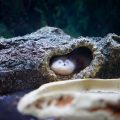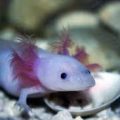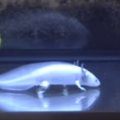Table of Contents
Axolotls are one of the most interesting species you could encounter as a pet. It is a unique species with a wide range of characteristics that are unique as well. Before you decide to raise an axolotl as a pet, you need to get insight into their biological features.
Amphibian or Reptile?
This is one of the biggest questions that people have off of axolotls. They belong to the salamander species and therefore is considered an amphibian. Due to this, axolotls can live both in land and on water. They are also able to bear eggs and come with a soft skin (rather than the scaly skin known to reptiles). But there are several biological and physiological features of axolotls that make them unique from a typical amphibian.
Axolotls Do Not Undergo Metamorphosis
This is another unique trait of axolotls. Adult axolotls are still in larval form because they do not undergo the metamorphosis stage. All types of salamanders go through metamorphosis except for axolotls. This process is known as neoteny wherein the axolotls remain in the larval form throughout their lives.
Axolotls Can Grow and Reproduce
Even though axolotls skip the metamorphosis stage, they are still highly capable of growing and reproducing. In fact, an adult axolotl can grow up to 18 inches in length. The average size of an adult axolotl is about 9 inches! Another unique characteristic for axolotls is their ability to reproduce faster than salamanders do.
Axolotls Can Regenerate
The list of things that make axolotls unique continue to add up. Aside from not going through metamorphosis and having no eyelids, axolotls also have the ability to regenerate. This means that if they manage to cut off a limb, that limb has the capacity to re-grow. This is true not just for their limbs or external body parts – axolotls can also re-grow their organs such as kidney, lungs and brain!
In fact, biology of axolotls had been at the center for studies on regeneration ability. Scientists are studying how regeneration occurs and if it could possibly be used for medical treatment on humans.
Axolotls are Carnivorous
Biology of axolotls are naturally carnivorous; this explains why they tend to eat baby axolotls when you put them together in one living container. The anatomy of axolotl is therefore typically carnivore except for their teeth. An axolotl’s teeth is actually a group of small stumps or cones. The first thing they do when they eat is to grip the food and then maneuver it into position that would enable them to swallow it whole.
As you can see, there are several features that make axolotls unique biologically speaking. From the absence of eyelids to their ability to re-grow limbs and organs, this amphibious species has certainly captured the attention of many, especially scientists. At the same time, axolotls are also quite popular as pets due to their unique physical characteristics that make them eye-catching.






 Author and long-time animal lover. Sharing knowledge on pet care through experience and the written word.
Author and long-time animal lover. Sharing knowledge on pet care through experience and the written word.